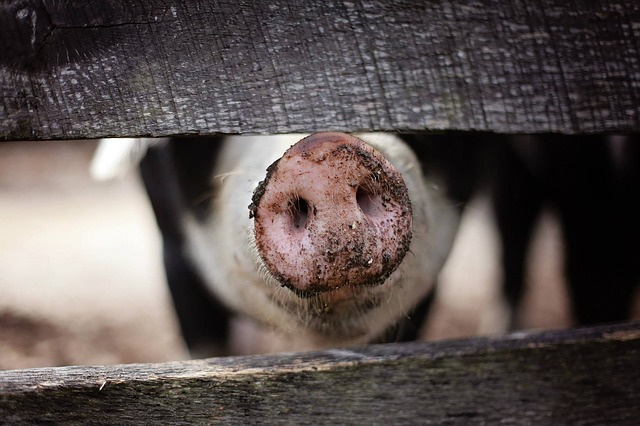Q fever has been in the news recently – but what exactly is it? In a new post for The Conversation, Simon Clarke, Associate Professor in Cellular Microbiology here at Reading, sheds light on this largely unheard-of disease which can be picked up from farm animals.

Q fever earned its name because it was originally called query fever. Doctors in Australia, who were the first to characterise it, didn’t know what was causing the disease. We now know it’s caused by a bacterium called Coxiella burnetii, which is a member of an unusual family of bacteria that must get inside cells and steal energy from them in order to survive, replicate and spread to another host.
Q fever infections have been reported in humans and animals in every geographical area, with the exception of New Zealand and Antarctica. It’s usually caught from farm animals – mainly cattle, sheep and goats – by inhaling the bacterium in air that has been contaminated with their birthing fluids, urine or faeces. Tick bites and contaminated milk can also transmit the infection, but human-to-human transmission is very rare.
It’s not surprising that people who become infected are more likely to have occupations where they have plenty of contact with animals or animal products, such as farm workers, veterinary surgeons, butchers and slaughterhouse workers. Similarly, people living within ten miles of a farm where animals are infected and people who travel to high-risk areas, such as the Middle East, where it is often found, are all at increased risk.
From mild to severe
Q fever begins with an acute stage, which, if not successfully treated, can develop into a chronic stage. In children, the symptoms are usually less severe than in adults.
Patients are initially likely to have flu-like symptoms, such as a headache, fever, chills, muscle pain and sometimes a cough. In more severe cases, pneumonia or hepatitis can occur. Post-Q-fever fatigue syndrome occurs in about one in five patients – something Blass claims he has also developed.
In most cases, Q fever doesn’t progress beyond flu-like symptoms. But in about one in 20 cases, the chronic, more serious phase of the disease can take hold. Localised infections of the heart, veins or bones can occur, with life-threatening consequences. These infections require prolonged periods of antibiotic treatment and medical surveillance.
Vaccines and antibiotics
The best way to prevent any infectious disease is to reduce the risk of infection. Employees in high-risk occupations are educated about the risk of exposure and what the symptoms of Q fever are so that they can recognise them early and seek medical help. It’s particularly important that anyone with damaged heart valves, a replacement mechanical heart valve, weakened arterial walls or who is pregnant, likely to become pregnant or whose immune system isn’t functioning properly, to be fully educated about the risks they may be exposed to.
Vaccination is possible in humans and animals, but the human vaccine, Q-Vax, is not licensed in Europe or North America, leaving at-risk people unprotected.
The vaccine, manufactured and licensed in Australia, needs to be administered with great care as it cannot be given to anyone who has a pre-existing immunity to Q fever. Severe localised reactions are a consequence of injecting the inactivated bacterium into people who already have some immunity to the disease. Indeed, such is the risk that the Australian Meat Processing Corporation runs a Q fever register to vaccinate and monitor the immune status of anyone who works in the industry.
Although Q fever infections can range from mild to serious, people who contract Q fever can be effectively treated with antibiotics – in most cases. Doxycycline is the most commonly used medicine, but there are several alternatives. While Q fever remains an unpleasant and sometimes life-threatening disease, it is rare in the developed world and is easily treated.
This post first appeared on The Conversation, 22 January 2019. Dr Simon Clarke’s research focuses on two species of bacteria, Staphylococcus aureus and Streptococcus pyogenes – in particular how they are able to infect us, resist our defences and cause disease. In collaboration with colleagues from Reading’s School of Food Biosciences who specialise in gut microbial ecology, Simon and team are currently investigating the ability of Staphylococcus aureus to colonise and persist within the human gut.
